As a tree matures, its crown grows. It is often wise to prune, or reduce the crown to keep the tree (and people) safe. Pruning may be used to reduce the tree crown and branches so they don’t damage property or interfere with views. Pruning is helpful for:
- Removing dead branches
- Removing cross branches
- Removing lower limbs
- To slow tree growth
- To direct tree growth
- To increase light penetration
| Before Pruning | After Pruning |
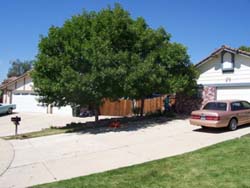 |
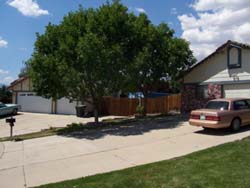 |
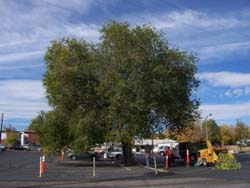
|
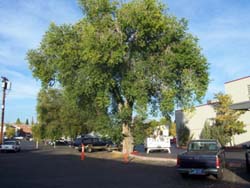
|
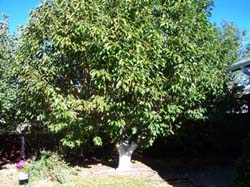 |
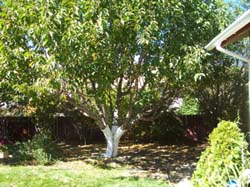 |
Pruning encourages a tree’s root system to supply more water and nutrients to fewer branches, making a tree healthier.
Most tree species will have branches die over time so they will need to be removed through pruning. Dead branches are not only a hazard (they can fall and hit someone or damage property) but they can also allow decay and disease to enter a tree.
The proper way to prune a tree is not to leave stubs behind as one would if they were trimming a hedge, but to leave a bud for future tree growth. Pruning a tree in the proper place will allow the tree to heal with the least amount of vulnerability.
While small trees can often be pruned with hand pruners and loppers, mature trees usually require a hand saw at a minimum.

It is best to avoid pruning from the end of the branch as this can cause unintended breakage and the tearing of branches down the trunk. The proper way to prune a branch is with two sets of cuts: first, undercut the branch and then make a top cut as illustrated below. This will remove the bulk of the branch, clearing space for a clean, final cut. The final cut is made at the branch bark ridge and collar, allowing the tree to heal its cut naturally.
No sprays or sealers are recommended to heal proper pruning cuts.
When Should I Prune My Tree?
Trees can be pruned anytime. It may be easiest to prune deciduous trees when the leaves are off. Pruning can also be done in late spring or early summer when the leaves are on so the desired look can be achieved.
If you want to achieve maximum growth with your tree, prune in early spring just before the rapid part of the growing season gets underway. If you want to slow the tree’s growth, prune after the spring growth. Flowering and fruiting of trees can be influenced by the timing of pruning. Consult a certified arborist for species-specific recommendations.
View the Arbor Day Foundation’s tree pruning animation
Read the International Society of Arboriculture’s tree pruning information
